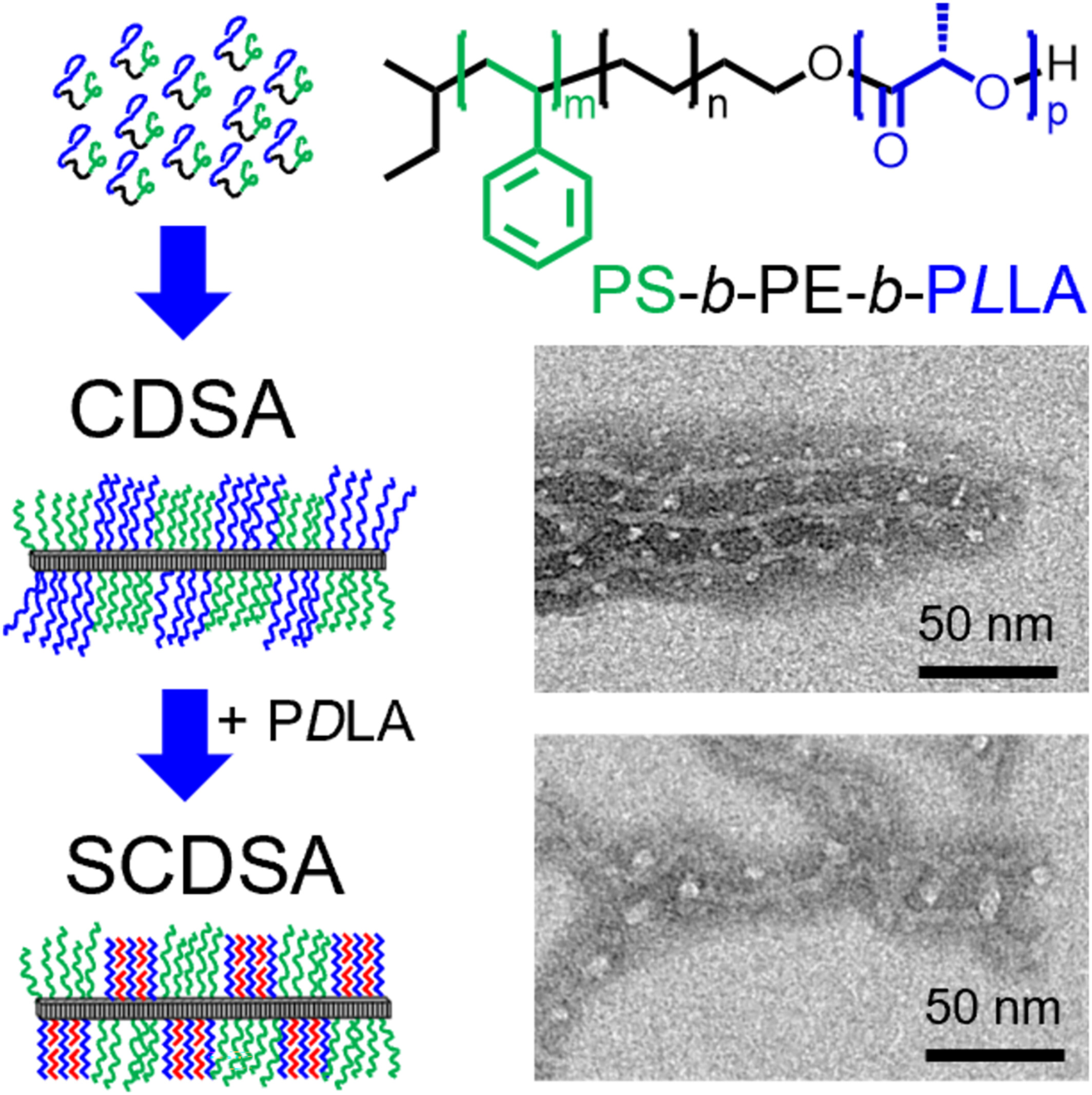News
Combining Crystallization- and Stereocomplex-Driven Self-Assembly for the Selective Loading of Patchy Worm-Like Core-Crystalline Micelles
09.04.2025
Roman Schaller, Emma Fuchs, Dr. Lisa Maria Günther, and Dr. Holger Schmalz
Journal of Polymer Science, 2025, https://doi.org/10.1002/pol.20250122
Micelles with a patch-like microphase-separated (patchy) corona are of increasing interest as their unique corona structure opens various applications, for example, as emulsion stabilizers, blend compatibilizers, nanoparticle templates for catalysis, or hierarchical self-assembly. Crystallization-driven self-assembly (CDSA) is an efficient method for the preparation of patchy core-crystalline micelles (CCMs). However, so far studies mainly focus on CCMs with amorphous corona blocks. In this work, a combination of CDSA with stereocomplex-driven self-assembly (SCDSA) is employed to selectively load stereoregular poly(L-lactide) patches in the corona of worm-like CCMs (wCCMs) formed by a double-crystalline polystyrene-block-polyethylene-block-poly(L-lactide) (PS-b-PE-b-PLLA) triblock terpolymer. Well-defined wCCMs with an amorphous patchy PS/PLLA corona are formed by CDSA in a good solvent for the PS and PLLA blocks, that is, PLLA crystallization is hindered within the patches. However, decreasing the solvent quality for the PLLA block can induce crystallization within the partially collapsed PLLA patches, although the degree of crystallinity is comparably low (< 5%). SCDSA of the patchy wCCMs with an enantiomeric poly(D-lactide) homopolymer is utilized to selectively form polylactide stereocomplexes within the patchy corona and, furthermore, to introduce a fluorescence dye, allowing the use of fluorescence correlation spectroscopy to study stereocomplex formation directly in dispersion.


